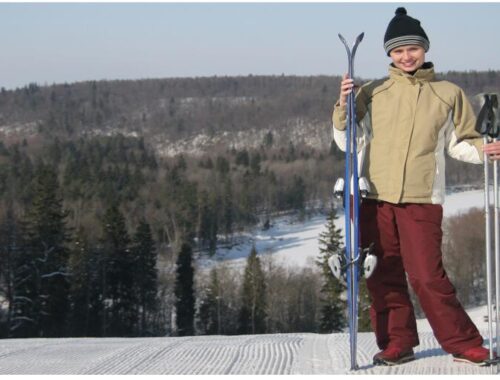Geography of Marion County, South Carolina
Marion County, located in the northeastern part of South Carolina, is a region known for its diverse geography, rich history, and vibrant communities. From its flat coastal plains and meandering rivers to its dense forests and scenic lakes, Marion County offers a unique blend of natural beauty and cultural significance.
Geography
According to Computerdo, Marion County spans an area of approximately 494 square miles, making it one of the smaller counties in South Carolina by land area. It is situated in the northeastern part of the state, bordered by Dillon County to the north, Horry County to the east, Florence County to the south, and Dillon and Florence Counties to the west. The county seat and largest city is Marion, while other significant communities include Mullins, Sellers, and Nichols.
The terrain of Marion County is characterized by its flat coastal plains, which are part of the Atlantic Coastal Plain region of the United States. Elevations in the county range from around 50 feet above sea level in the low-lying areas to approximately 150 feet above sea level in the upland areas. The landscape is shaped by geological processes such as erosion, sedimentation, and the action of wind and water, resulting in a varied and picturesque countryside.
Terrain
The landscape of Marion County is defined by its location within the Atlantic Coastal Plain, a region of low-lying plains and wetlands that extends along the eastern seaboard of the United States. The county is situated in the western part of the Coastal Plain, near the fall line where the Piedmont Plateau meets the Coastal Plain. This transition zone gives rise to a diverse range of habitats and ecosystems, including hardwood forests, wetlands, and agricultural fields.
In addition to its flat plains and wetlands, Marion County is also home to several upland areas and ridges, particularly in the western part of the county near the Pee Dee River. These upland areas provide habitat for a variety of plant and animal species and offer opportunities for outdoor recreation, including hiking, hunting, and wildlife viewing. The county’s varied terrain supports a wide range of ecosystems, from bottomland hardwood forests along the rivers to pine forests and grasslands in the uplands.
Climate
Marion County experiences a humid subtropical climate, characterized by hot, humid summers and mild winters. The region is influenced by its proximity to the Atlantic Ocean and the Gulf of Mexico, as well as the weather patterns of the southeastern United States.
Summers in Marion County are typically hot and humid, with average daytime temperatures ranging from the 80s to 90s Fahrenheit. Heatwaves are common during the summer months, with temperatures occasionally exceeding 100 degrees Fahrenheit. Thunderstorms are also frequent, particularly in the afternoon and evening, bringing heavy rainfall, lightning, and gusty winds.
Winters in Marion County are generally mild, with average daytime temperatures ranging from the 50s to 60s Fahrenheit. While snowfall is rare, the county occasionally receives light snow or ice during the winter months, particularly in colder years. Frost and freezing temperatures can occur, particularly in the low-lying areas and river valleys.
Spring and fall bring transitional weather, with mild temperatures and changing conditions. Springtime heralds the blooming of flowers and the emergence of wildlife, while fall is characterized by cooler temperatures and vibrant foliage as the leaves change color before winter sets in.
Rivers and Lakes
Marion County is traversed by several rivers, streams, and creeks, which play vital roles in the region’s ecology, economy, and recreational opportunities. The Little Pee Dee River, one of the major tributaries of the Pee Dee River, flows through the western part of the county from north to south, providing vital water resources and habitat for diverse wildlife. The river is popular for its scenic beauty, clear water, and abundance of fish species, including bass, catfish, and sunfish.
Additionally, Marion County is dotted with numerous smaller rivers and creeks, including Bear Creek, Reedy Creek, and Catfish Creek, which meander through the plains and wetlands of the county. These waterways provide habitat for a variety of fish and wildlife and offer recreational opportunities for fishing, canoeing, and kayaking.
While Marion County does not have any natural lakes of significant size, there are several reservoirs and impoundments scattered throughout the region. These bodies of water serve various purposes, including water supply, flood control, and recreation, and contribute to the county’s overall water resources.
Parks and Natural Areas
Marion County features several parks, natural areas, and wildlife habitats, providing residents and visitors with opportunities for outdoor recreation, education, and conservation. One of the most notable parks in the area is the Little Pee Dee State Park, which encompasses over 2,800 acres of woodlands, wetlands, and shoreline along the Little Pee Dee River. The park offers camping facilities, hiking trails, and boating opportunities, allowing visitors to experience the natural beauty and biodiversity of Marion County.
Other notable parks and natural areas in Marion County include the Marion National Forest, the Sandy Bluff Heritage Preserve, and the Lake View Wildlife Management Area. These protected areas provide opportunities for hiking, birdwatching, and photography, allowing visitors to connect with nature and explore the county’s diverse landscapes and ecosystems.
Conclusion
Marion County, South Carolina, offers a diverse and picturesque geographical landscape, characterized by its flat plains, meandering rivers, and dense forests. The county’s terrain, climate, and natural features provide a wealth of opportunities for outdoor recreation, agriculture, and wildlife habitat. Whether exploring the Little Pee Dee River, camping in Little Pee Dee State Park, or hiking in Marion National Forest, residents and visitors alike can experience the natural wonders of Marion County.
You May Also Like

Latvia for Nature Lovers
March 14, 2021
Geography of Vietnam
April 26, 2022